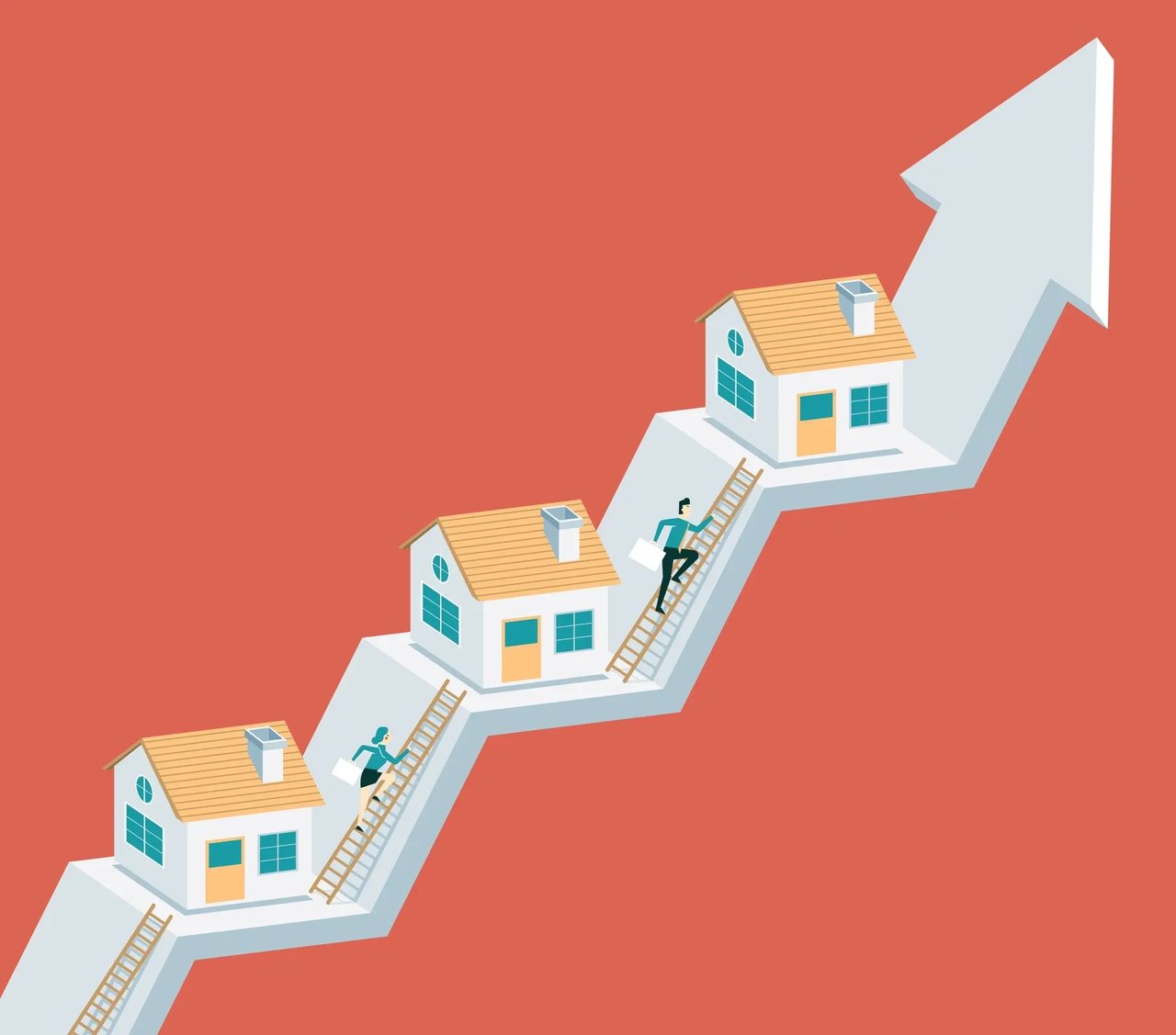It's only been a few weeks since our last update, but the big story this week as we look back on the month of January is "perspective". The market in the Phoenix area largely depends on whether you are a buyer or seller and even which zip code you live in (or want to buy in). We are officially in the Spring market, which historically is a very active time period when we see jumps in buying and selling activity, and the 2023 Spring Market is the same...but different. We are definitely not in 2020-2022 anymore.
The big news for buyers is a brief stabilization of mortgage rates in January, which fluxed in a narrow range between 6% to 6.2%. Buyers definitely took advantage of the opportunity, which resulted in an 86% increase in listings going under contract since the beginning of January. In a review of the Cromford Index through February 9th, 2023, we can see six major cities moved into a Seller's market in the last few weeks (remember, a Seller's Market is a value over 100. The closer the value gets to 100, the more "balanced" the market).
This brings the total number of major cities in a Seller's Market to a total of 11 out of 17. In a Seller's Market, buyers have less leverage to negotiate, because competition for available homes gives sellers the advantage.
Two additional cities, Peoria and Surprise, moved into a Balanced Market from a Buyer's Market (below 100 to at or near 100). Only a handful of major cities, including Maricopa, Queen Creek, Goodyear, and Buckeye are still in Buyer's Market territory. It would be premature to suggest that these results constitute a rebound of the market, as buyers are extremely sensitive to interest rates right now, and a future period of volatility could drive a majority of the major cities back into Buyer's Market territory.
This might all be exciting news for sellers, but there is no indication of a return to the feeding frenzy of the last 2 1/2 years. While a return to Seller's Market in 11 of the major cities in Greater Phoenix is generally good news, when compared to Cromford Index valuations exceeding 300 in the last couple of years, we are a long way from the seller euphoria of the past. That said, as buyers move off the sidelines, sellers are enjoying a respite from concession demands. There have only been 9,664 new listings since the beginning of the year on the MLS, which is the lowest number of new listings in the first 5 weeks of the year in over 23 years (for comparison, the median is about 14K listings). Less competition with other sellers means greater price stability and fewer concession demands. It also means fewer days on market. As we get further into the Spring season, we may see DOM hit 25-30 days, although that's still much longer than the 5-7 day average DOM last year. That said, it's still better than the 60-75 days some zip codes were experiencing. in Nov/Dec.
Sellers shouldn't get complacent, though. As mentioned early, the fragile improvement in mortgage rates could take a turn at any time, which could cause a reverse in course for the major cities currently in a Seller's market. If you are thinking about selling this year, waiting may not be a good idea.
Since we have no crystal ball, it's impossible to predict where rates will go. However, experts from the major market watchers, such as CoreLogic, FannieMae, and FreddieMac, among others, are positing that rates will remain stable and even trend down in the first quarter. This would be great news for buyers if it pans out. Few market watchers are predicting a huge rate increase over the course of 2023, but many agree that rates will likely fluctuate every time a new economic report comes out. The Treasury bond market, which undergirds the mortgage industry, is a little gun-shy at the moment and is pretty reactive to economic news as investors digest new information and try to anticipate Fed actions. This means that buyers may get a little whiplash over the coming months as mortgage rates bounce around.
Speaking of economic news, there is good news for the Phoenix area in recent data. Arizona gained 93,700 jobs for the state in 2022. The unemployment rate dropped from 3.1% in January 2022 to 2.7% by the end of December 2022, which exceeded the national average. Unemployment claims decreased by 9,500 as 2022 played out, even though the labor force expanded by 58,000 and many in the tech and real estate industries experienced layoffs. While low unemployment puts pressure on wages, increasing earnings could be a positive indicator for housing affordability in Greater Phoenix.
_____________
We are here to help! If you want to find out how much your home is worth in this strong market, email me at [email protected]. We would be happy to help you determine if the time is right for you to sell your home or buy a new home.


































































































